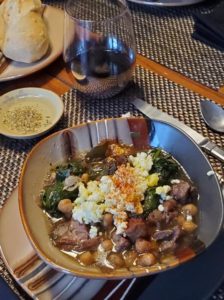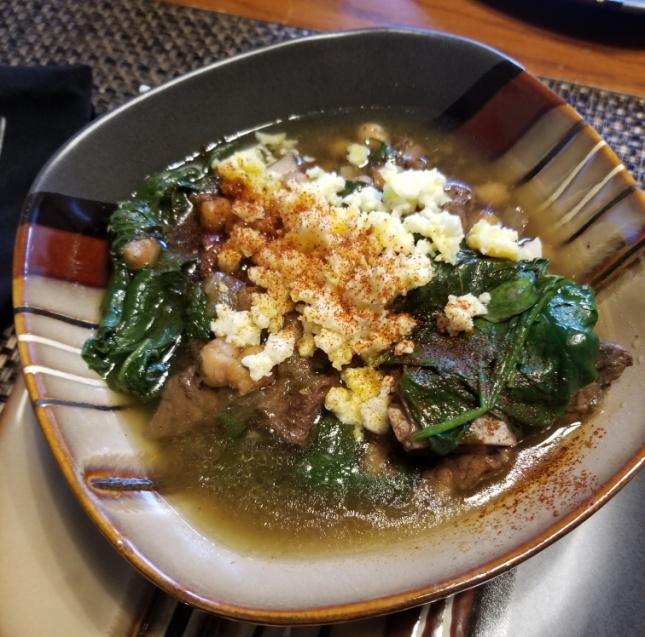In 1400s Spain, for anyone baptized Catholic, practicing the tenants of another faith was considered heresy ̶ which was tantamount to murder. Prohibited faiths included Islam, Judaism, and later Protestantism. However, Jews forced to convert (Conversos) were under the greatest scrutiny.
As such, the Spanish Inquisition developed a checklist of behaviors used to detect whether an individual or household was practicing Jewish traditions in secret. Most of these behaviors, focused on the preparation, serving, and consumption of food. Here is a look at the checklist.
The Spanish Inquisition’s Checklist of Detectable Behaviors
- Avoiding eating certain animals ̶ Pigs, rabbits, camels, birds of prey or scavengers, and shellfish; the same restrictions laid out in Leviticus. For more information see: Overview of Jewish Dietary Laws & Regulations
- How meat is prepared ̶ The Inquisition paid great attention to the way animals were slaughtered as a means of detecting Jewish observance. These practices around preparing meat were especially obvious transgressions. Jewish law forbids consuming blood in any fashion. So Jews go to great lengths to remove it from meat.
- Animals are slaughtered with a single slice of the jugular. This method is quick and causes the least amount of suffering.
- Second, the meat is drained of as much blood as possible. Then it is soaked in water and packed in coarse salt to draw out more blood. In light of this, there is a certain absurd irony in the medieval Blood Libel allegation accusing Jews of kidnapping Christian children to use their blood to make Passover matzo.
- The Sabbath meal ̶ Less obvious, but still effective for detecting “heretics” was the Biblical injunction against working on the Sabbath, which includes cooking.
- Jews have always prepared some
 version of a one-pot meal. It is started before the Sabbath, left it in the oven overnight, and served warm midday on Saturday. Inquisition scribes detail this Sabbath casserole as being made with meats, beans, vegetables, and eggs. Serving this dish was a telltale sign people were committing heresy. Beef or lamb were typically the base, although dried salted fish stews were known in coastal regions. They used only vegetables and beans during Lent. The dish had various names: hamin, caliente (hot), trasnochado (kept overnight). One dish in Andalusia made with mutton and eggplant they called buraniya. However, the name most often described in the Inquisition transcripts is Adafina, a word derived from Arabic for hidden.
version of a one-pot meal. It is started before the Sabbath, left it in the oven overnight, and served warm midday on Saturday. Inquisition scribes detail this Sabbath casserole as being made with meats, beans, vegetables, and eggs. Serving this dish was a telltale sign people were committing heresy. Beef or lamb were typically the base, although dried salted fish stews were known in coastal regions. They used only vegetables and beans during Lent. The dish had various names: hamin, caliente (hot), trasnochado (kept overnight). One dish in Andalusia made with mutton and eggplant they called buraniya. However, the name most often described in the Inquisition transcripts is Adafina, a word derived from Arabic for hidden.
- Jews have always prepared some
How Culinary Traditions Survived the Inquisition
- Confessions ̶ When the Inquisition established a tribunal in a particular community, they issued an Edict of Grace, a period of time for individuals to come forward, confess, or testify about behaviors associated with “judaizing”. These confessions described in detail the ingredients, preparation, and serving of traditional Jewish dishes. This was taken down as evidence and used to arrest “heretics”. Conversos who confessed they treated with leniency.
- Trial Documents ̶ Conversos unwittingly left us recipes for Adafina through transcriptions of hundreds of trials during the Inquisition’s reign of terror. The victims of these trials met with unhappy ends. The Inquisition burned some at the stake. Some died from torture or the vicissitudes of imprisonment. In these cases, bones were exhumed and burned to allow the Inquisition to confiscate their estates. Others might be sentenced to the galley, fined and subjected to public whippings. Even those reconciled to the church they sentenced to wear a Sanbenito for years, a penitential garment branding them a heretic.
- Emigration ̶ Some people escaped to the New World, the countries around the Mediterranean, North Africa, and the Holy Land. They brought with them Sephardic traditions, including the cuisine. For more fascinating information on this subject, check out A Drizzle of Honey: The Lives and Recipes of Spain’s Secret Jews
Want to make a delicious Heretic’s Stew at home? Contact me for my free recipe.
